Sustainability sits comfortably in an urban oasis

The setting is an old Coach House surrounded by the original walled garden, in the leafy suburbs of Didsbury, Manchester. The owners, an energetic couple citing quality and workmanship alongside sustainability and cultural values as key drivers in their decision-making process.
With a 10-12 year research project under their belts, our clients couldn’t remember how they first found us. Searching for the “final piece of the jigsaw puzzle” of a renovation project spanning decades, they’d developed a clear vision. It was just a case of finding the right company to deliver that for them.
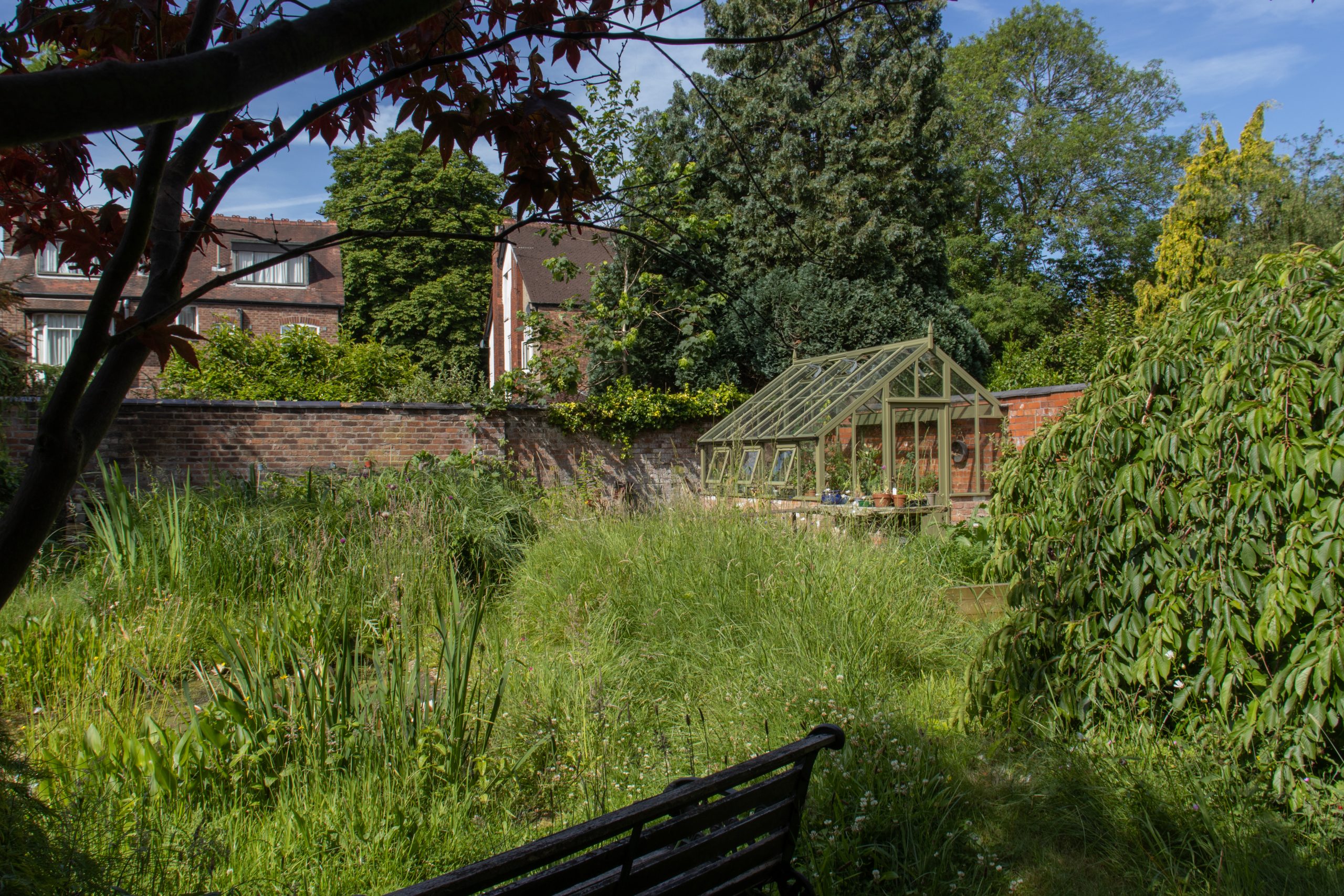
Built in 1840, their home is what’s left of one of the largest estates in the area. The old butlers’ and gardeners’ cottages and part of the original walled garden boundary being the only other surviving remnants.
“The chance to own a walled garden in the centre of an urban environment seemed like a dream and a wonderful place for kids to grow up”
Their garden now stands on what was once the orchard. With evidence amongst the brambles and weeds when they first excavated the area, of an original glasshouse in the vicinity.
“We wanted the new greenhouse to feel as if it has always been here. For it to “sit” comfortably as opposed to making a grand statement.”
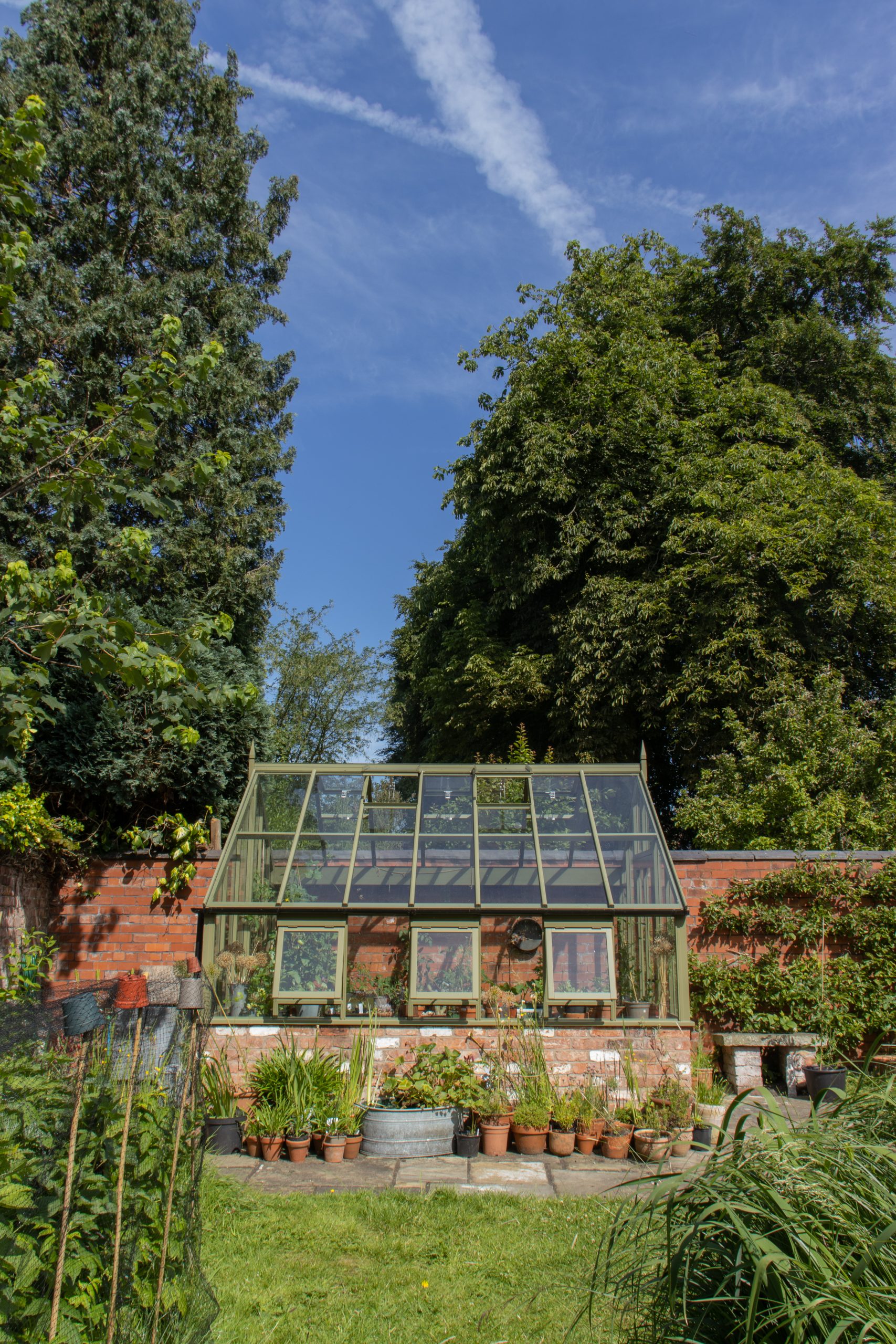
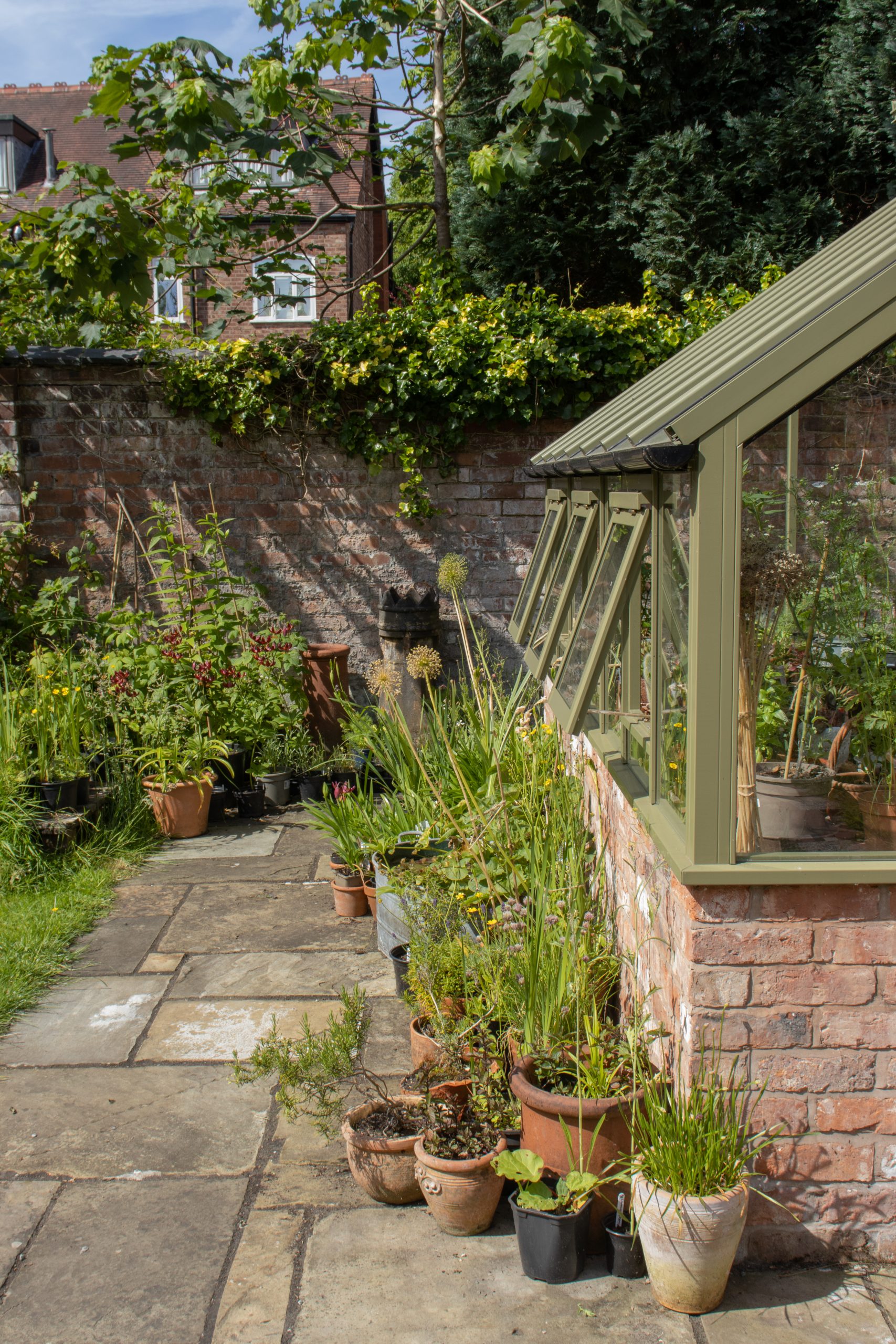
Exponents of permaculture long before it became “a thing”, their approach to rebuilding the garden has been a slow and careful evolution done with the lightest of touches. The greenhouse seems to epitomise this strategy. Hovering almost imperceptibly on the red brick of the boundary wall, beyond the informal meadow and pond that take centre stage in the plot. Their priority is the wildlife habitat they are the custodians of. This informs their planting and necessitates a tadpole nursery, amongst other heroic efforts.
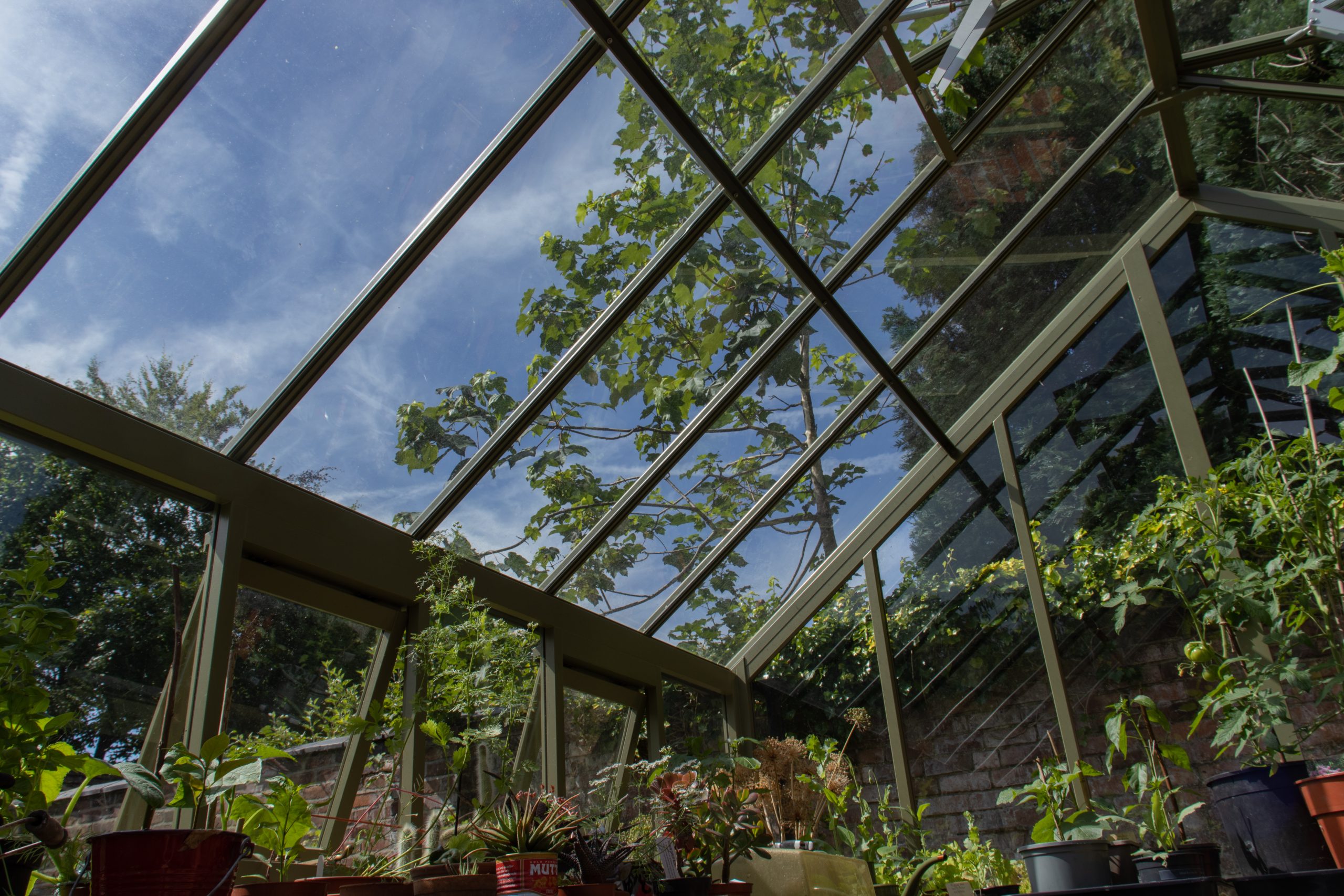
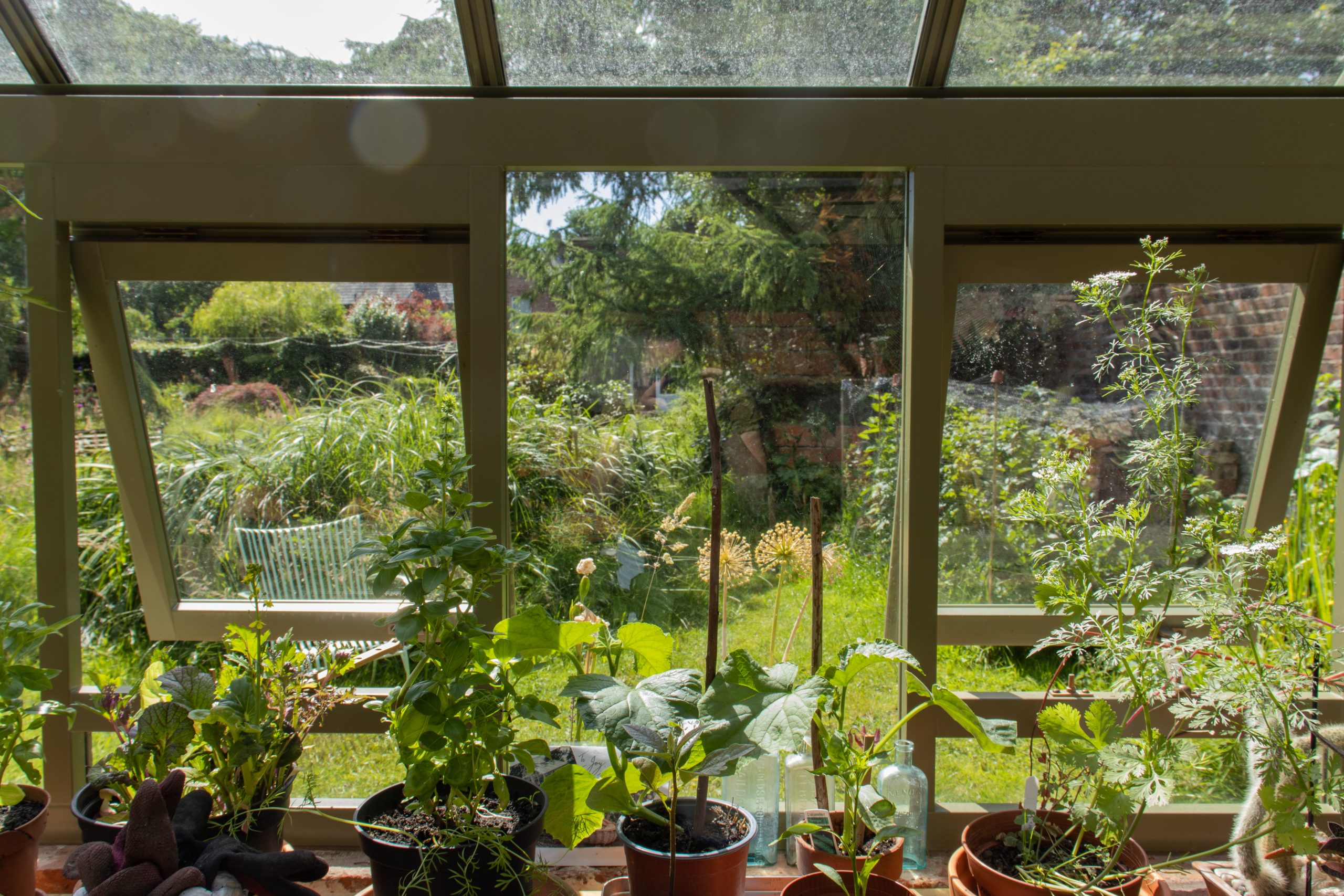
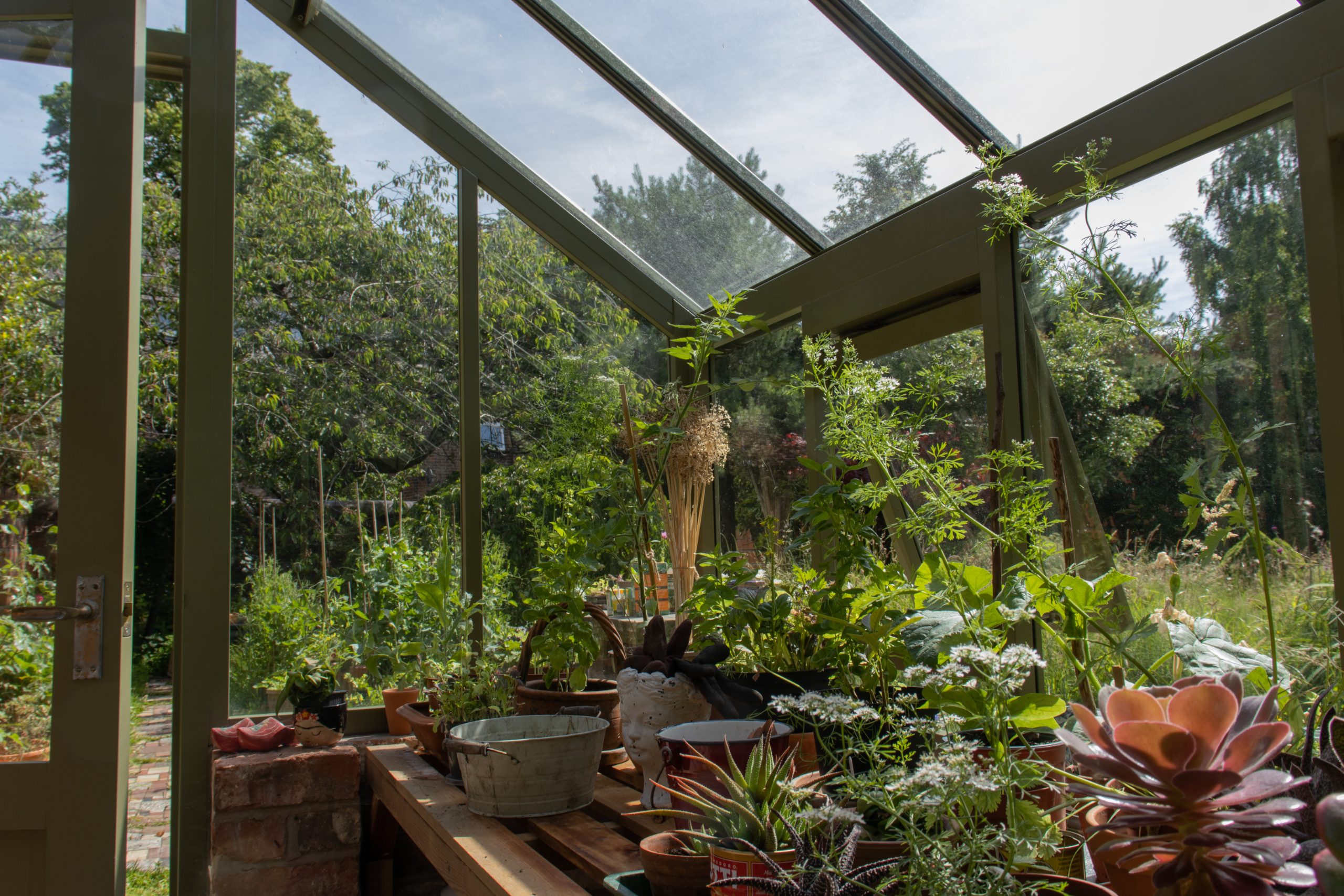
Of equal importance is the production of vegetables for the kitchen. The remaining salads and herbs, all grown from seed earlier this spring, fill the greenhouse. The more mature plants crowding out the raised beds which flank the greenhouse.
During the winter, the alpines will take over. The demands of these arid-loving plants were a key consideration when envisaging the greenhouse – a three-quarter span design, making use of the high garden walls, and maximising ventilation with increased headroom and roof vents both sides of the ridge. The addition of side vents further enhanced the ventilation flexibility.
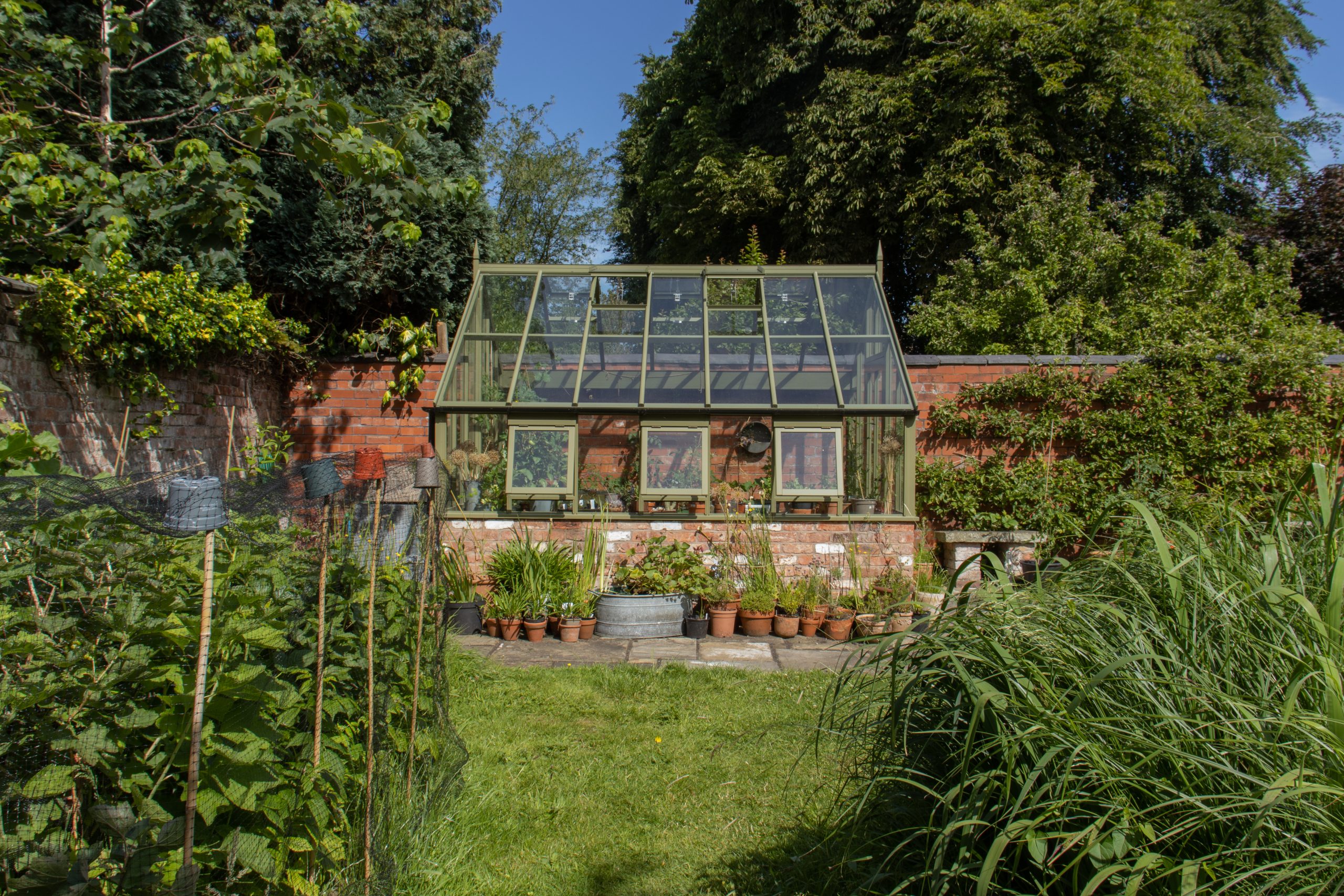
Once the practicalities of the greenhouse design were clear in their minds, finding a company that shared their values was the next step. This is a once-in-a-lifetime investment purchase, and sustainability and provenance of materials was paramount. Timber was preferred over aluminium, but it had to come from a certified source.
“Accoya was new to us so seeing it, in its painted finish, was very important. It maintains the ambience and appearance of wood but feels completely different to cedar. It feels like longevity.”
Next was which specification to go for. The period of the house may suggest Victorian, but the planned size of the greenhouse suggested Edwardian might be a better solution. Besides, part of the brief were the conditions that the structure be of simple lines. With the more ornate detailing and substantial framework of the Victorian missing this mark, it was a straight-forward choice.
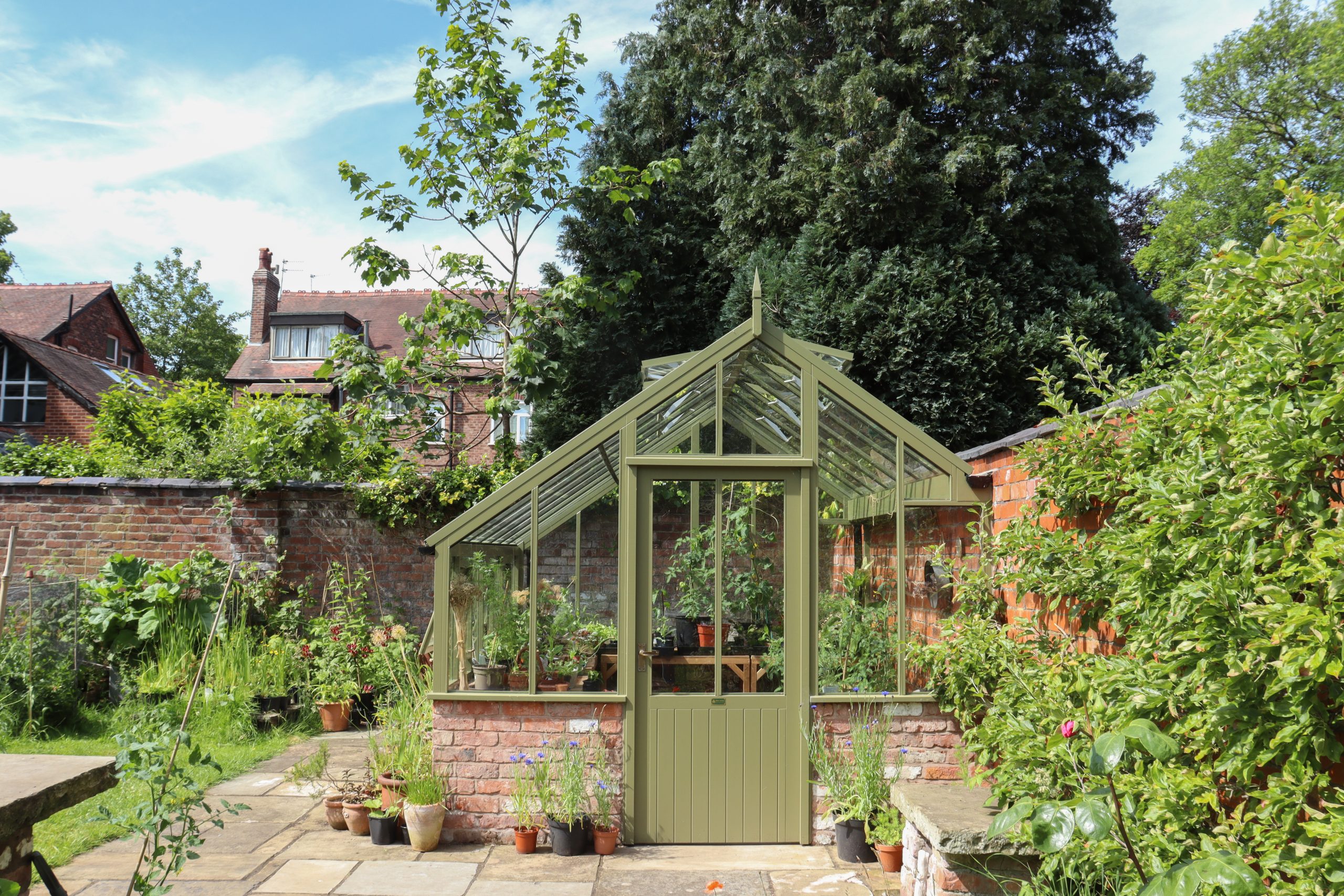
We prepared drawings detailing the slightly lower than usual eaves height along with the optimised roof and side ventilation. We issued a base plan, and ticked off the list of final considerations – guttering, rainwater collection, internal floor specification.
“The visit to White Cottage’s workshops was the deciding factor. Seeing the making and materials for real was important, the attention to detail, and hearing the pride they felt in their product clinched it.”
Contact us to arrange a visit to our workshops
“It looks like it’s been here forever”

